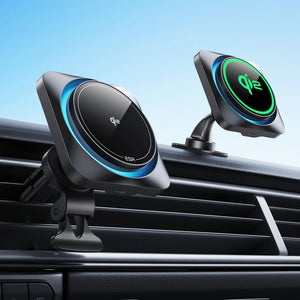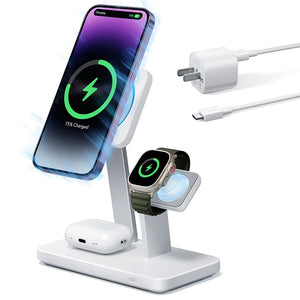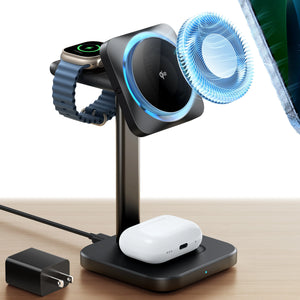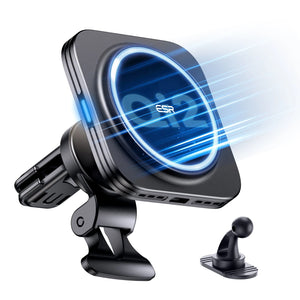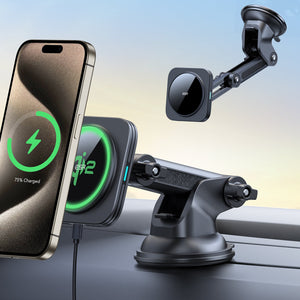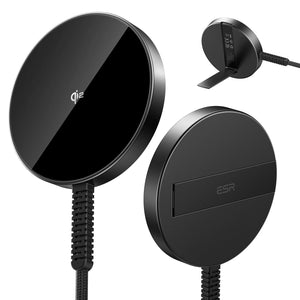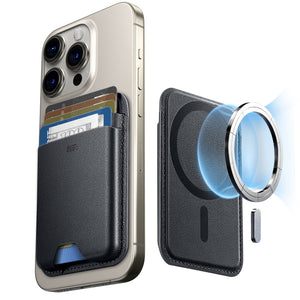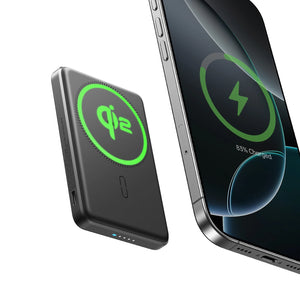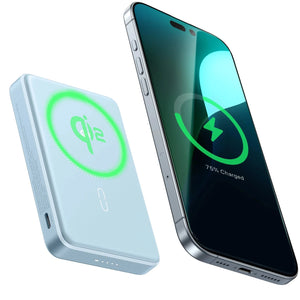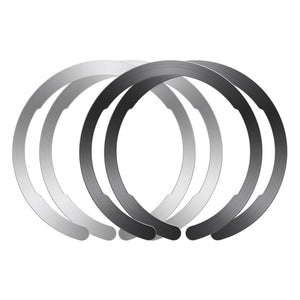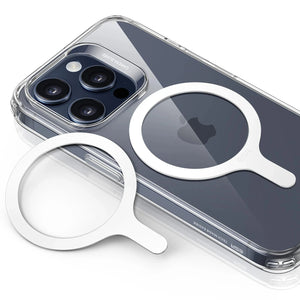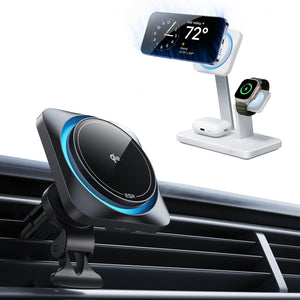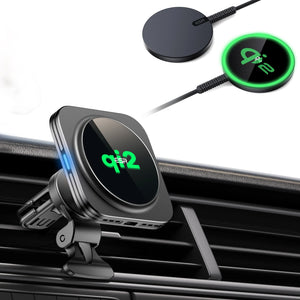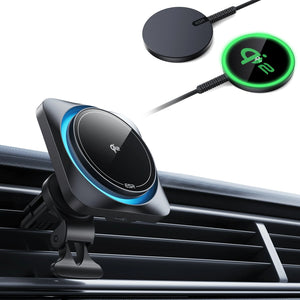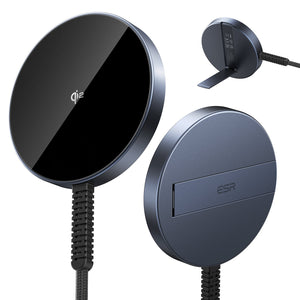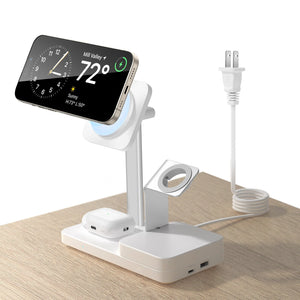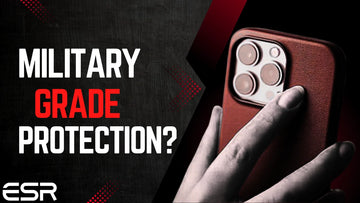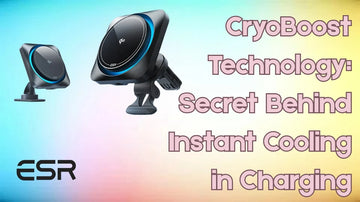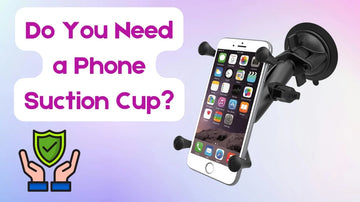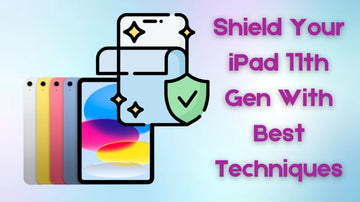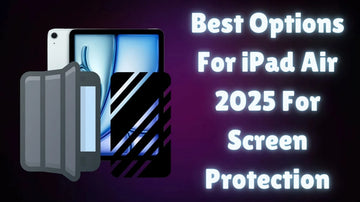One thing Apple is loved for is that they never cease to amaze us! Moving at the speed of light to be a pioneer of notable innovations, Apple introduced what is known as MagSafe. And in a short period of time MagSafe has become a mainstay. But what is MagSafe, and how exactly does it work?
In this guide, you’ll learn everything that you need to know concerning MagSafe, its purpose, benefits, cons, and every other thing!
Everything You Need to Know: What is a MagSafe?
Have you ever wondered how the word MagSafe actually came to be? To some people MagSafe actually sounds like some complicated tech jargon, right? In actuality, MagSafe is actually pretty simple. Let me do a breakdown: take “Mag” to mean Magnet and take “Safe” to mean safely built. So, in essence, MagSafe is a technology made by Apple with a ring of Magnets Safely built into the back of iPhones. There's a catch though…not all iPhones are compatible with MagSafe. In the later part of this guide, you'll find the list of iPhones that are MagSafe ready.
That said, what exactly is MagSafe used for?
Well, the main reason for the introduction of MagSafe is traceable to the year 2006 when Apple designed MagSafe primarily to improve the safety of MacBook laptops while charging or plugged in. However, as time passed, MagSafe technology extended from MacBooks to iPhones and other Apple devices for wireless charging and attachment of accessories.
MagSafe makes wireless charging a breeze. The magnets surround the wireless charging coil, so your phone snaps into place on a MagSafe charger and stays there until you pull it away. But it doesn't end there… this little ring of magnets opens up a world of convenience. It's also a platform for connecting and swapping accessories. Take MagSafe wallets, for example you can easily attach them to the back of your phone without fear of falling off. In all, MagSafe is all about maximizing your phone for a more convenient, easier and efficient way to enjoy your device.
Is MagSafe worth having?
All thanks to Apple, almost everybody is now saying one thing or the other about MagSafe technology because it offers convenience and ease of use. Considering the ease and convenience, MagSafe is really worth having. If you have the money then you should consider investing in MagSafe. However, like any technology, MagSafe also has its pros and cons. MagSafe has a lot of compelling advantages, however, but let's weigh in on the cons.
Cons of MagSafe
1. Compatibility Issues
The first disadvantage of MagSafe is that it is Apple's proprietary technology meaning that it is designed for only Apple devices, which tends to limit its compatibility with other brands.
2. Likelihood of Heat Generation
There have been cases where users have reported that MagSafe charging caused devices to heat up which may affect battery life in the long run.
3. Cost Implications
For people who want something cheaper they might find MagSafe a little more expensive than other Non-MagSafe products. This higher price tag is enough to discourage people (especially those on a slim budget) from investing in MagSafe.
Which iPhones Are Compatible with MagSafe?
iPhone 16 Series
● iPhone 16
● iPhone 16e
● iPhone 16 Plus
● iPhone 16 Pro Max
iPhone 15 Series
● iPhone 15
● iPhone 15 Plus
● iPhone 15 Pro
● iPhone 15 Pro Max
iPhone 14 Series
● iPhone 14
● iPhone 14 Plus
● iPhone 14 Pro
● iPhone 14 Pro Max
iPhone 13 Series
● iPhone 13
● iPhone 13 Mini
● iPhone 13 Pro
● iPhone 13 Pro Max
iPhone 12 Series
● iPhone 12
● iPhone 12 Mini
● iPhone 12 Pro
● iPhone 12 Pro Max
Are Androids Compatible With MagSafe?
Let's get this straight: MagSafe technology is not of Android but originally designed by and for Apple devices. Although MagSafe is an Apple innovation, Android users can still enjoy the benefits of MagSafe through the use of the right accessories.
In essence, we can say that although not a native feature like on iPhones, Android devices can be compatible with MagSafe technology as long as they are paired with the right accessories to make them MagSafe-compatible. You can make your Android phone MagSafe-compatible by investing in magnetic ring plates, MagSafe-compatible cases or high-quality MagSafe accessories/chargers designed for Android devices.

Is a MagSafe case necessary?
MagSafe cases are smartphone cases that are specially designed for MagSafe. Talking about MagSafe, the question that I've had to answer the most is whether MagSafe case is necessary. As always, I won't get tired of enlightening people about this. For you to understand whether MagSafe case is necessary or not, you need to understand the relationship between MagSafe chargers and cases, and how they relate with/to smartphones.
For instance, some smartphones are MagSafe-ready meaning that they have been designed with built in Magnets for effortless wireless charging. A perfect example of such smartphones with MagSafe capability include iPhone 12 series and later. On the other hand, we have smartphones that are not MagSafe-ready (no built-in magnetic ring), but they have built-in Qi2 meaning they support wireless charging. A perfect example of such is the Samsung Galaxy S25 that has a built-in Qi2, but it doesn’t have a built-in magnetic ring. As a result it requires MagSafe cases with a built-in magnetic ring for support.
That said, a young boy once walked up to me and asked “Can I Use a MagSafe Charger Without a MagSafe Case? Well, here is my answer; Absolutely yes! You can use a MagSafe charger without a MagSafe case. But there’s a catch: your smartphone should have a built-in magnetic ring, like Apple devices (iPhone 12 and later) with which you can attach it directly to the MagSafe charger. However, if your smartphone lacks this feature, then you might need a MagSafe case with a built-in magnetic ring for support.
Let me clear the air on this: MagSafe doesn't work with all cases. MagSafe only works effectively and reliably with any case that is specifically designed for it. In essence, any case that is labeled as "MagSafe compatible" definitely has built-in magnets so it will work with MagSafe. However, any case that is not labeled as "MagSafe compatible" is just a regular case without magnets therefore it won't ensure proper alignment for wireless charging or charging with MagSafe accessories.
How to use your MagSafe Charger with your iPhone?
Do you have a MagSafe compatible iPhone but don’t know how to use MagSafe charger with your iPhone? Let me give you a step-by-step guide on how to use your MagSafe Charger with your iPhone:
Step 1: Unboxing & Inspection
First thing to do is unbox your MagSafe Charger and inspect it for any damage or defects. Confirm that all the components are present and intact including the charging pad and cable.
Step 2: Plug in Your MagSafe Charger
Second step is to plug your MagSafe Charger into a power source and you can achieve this by using the cable provided. Also confirm that the charger is connected to a compatible power adapter (5W, 7.5W, or 15W).
Step 3: Place Your iPhone on the Charging Pad
The next step which is your third step is how you position your iPhone on the MagSafe charging pad. Remember your iPhone has a magnetic ring built inside and so does the MagSafe charger. Now make sure that you place your iPhone on the charging pad in a way that the charging coils are aligned. But How do you know when the charging coils are aligned? See your answer in the next step!
Step 4: Charging Begins
Before your iPhone begins to charge, the charging coils has to align and you can confirm its alignment when you hear a gentle click or your iPhone displays the charging animation. As soon as your iPhone is properly aligned and connected, it begins to charge automatically.
Step 5: Monitor Your Charging Progress
You want to keep an eye on your iPhone's screen to monitor your charging progress. On your iPhone screen you will see a display (charging animation) and the battery level will start to increase.
Step 6: Remove Your iPhone When Charged
Last and final step is to disconnect your iPhone from the charging Pad. Pay attention to you iPhone and remove it from the MagSafe charging pad as soon as it is fully charged. But if you wish to maintain your battery level, then you can leave it on the charger, and it will automatically switch to a trickle charge mode to maintain the battery level.
If you want to avoid the heat generated by MagSafe, check out our 3-in-one CryoBoost wireless charger below!
Best 3-in-1 Magsafe Wireless Charging Stations with Cryoboost

25W 3-in-1 Wireless Charger with MagSafe + CryoBoost - US Plug
With this ESR 25W 3-in-1 Wireless Charger with MagSafe, your iPhone stays cooler, and charges faster because of the presence of CryoBoost. While other MagSafe chargers heat your phone to over 108°F, this CryoBoost's phone-cooling fan and heat-dissipating components keep your phone below 98°F during charging.
Conclusion
The introduction of MagSafe was a milestone achievement for Apple as it further propelled them into the front row of innovators. Like every other product MagSafe also has its downsides. Notwithstanding, MagSafe is worth investing on.
People also ask:
Does MagSafe get weaker over time?
Every product has a life span/expiry date and MagSafe is not an exception. The truth is that MagSafe can get weaker over time due to normal wear and tear or exposure to extreme temperatures. But then the weakness of MagSafe is gradual, takes a long time and is not noticeable in everyday use. So this weakening shouldn't affect the charging performance itself.
Is it bad to use MagSafe all the time?
Using MagSafe all the time is not a bad idea. I am also a big fan of MagSafe. But I’m always careful how I use it because MagSafe has the tendency to generate heat.
How do I know if my MagSafe charger is bad?
If you notice overheating, slow charging, or your iPhone not charging even when connected, then your MagSafe charger may be bad.
